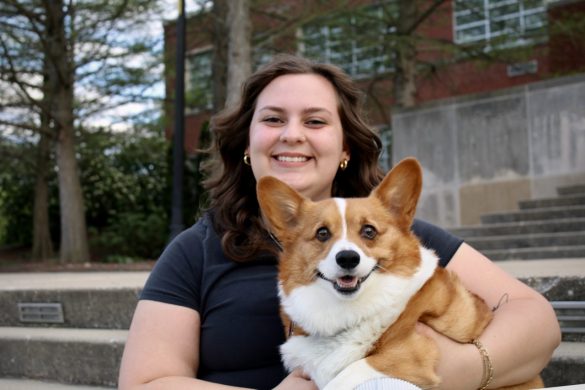We cannot afford to ignore climate change. It’s staring us in the face, ready to kill us off if we don’t address it and start making changes. We can sit and blame major fossil fuel companies for polluting our ecosystem, or we can stop being complacent and make daily changes for ourselves. Sustainability starts with us, here, at the University of Indianapolis. As much as I hate the paper straws, UIndy was right to switch from plastic. But now, as a community of consumers, we need to do more.
For example, when the time comes to move out of the dorms, we have a lot of stuff to sort through and throw away such as old notebooks, ramen noodles we were too lazy to cook and sweaters we bought and never wore. We can easily save these items from the landfill and create a donation program at the end of the semester to lessen our carbon footprint. The university should encourage students, especially at the end of the semester, to donate to local organizations.
Installing bins in Schwitzer, the library and residence halls, where students can easily deposit their items and go about their day, and encouraging students to use those bins would be even better. Goodwill and The Salvation Army have pickup programs, and other organizations probably would be willing to work something out. The University of Michigan hosts a program similar to the one I am proposing and they donated 12.5 tons of goods to local charities as a result, according to The University Record. Something like this can be easily replicated here.
As individuals, instead of buying new clothes from the mall, we should make an effort to buy second-hand clothing. It takes more than 2,100 gallons of water to make a pair of jeans, according to watercalculator.org. While water technically is a renewable resource, it can only stay renewable if managed properly, according to the Florida Department of Education in an online text about the conservation of renewable and non-renewable resources; and currently water is one of the most poorly managed resources on Earth.
There are plenty of options available to buy second-hand, so there’s really no reason not to. If you don’t like digging through hundreds of clothes at Goodwill, there are online thrift shops that will do it for you. Besides, I don’t know anyone, at least at my age, who would say no to cheap clothes and a good thrift.
Change also can come from simple things, such as composting food. Roughly one third of the food produced for human consumption every year is lost or wasted, according to the Food and Agricultural Organization of the United Nations. Agriculture is responsible for a decent portion of greenhouse gas emissions, roughly 10 percent, according to the United States Department of Agriculture.
Cleveland State University’s dining catering service offers composting bins which go out to their composting service provider, Full Cycle Organic. The catering service also uses biodegradable tableware that can be placed into the compost. Above all, this is something I would like to see UIndy implement. I am sure that other students also would rather see the budget used for the good of the environment rather than for items like branded napkins.
Recently, a change UIndy made was trading the paper boats at Streets for plastic ones. I cannot understand why the university made this switch; it runs contrary to the decision to trade plastic straws for paper straws.
Last but not least, nothing is worse than the styrofoam takeout boxes in the dining hall. The styrofoam industry ranks fifth as the largest creator of toxic wastes in the United States, according to Green Dining Alliance. Styrofoam breaks down into harmful chemicals that linger in soil and water for centuries.
Replacing the styrofoam boxes with cardboard boxes is an easy alternative or the dining services at UIndy could allow people to bring their own Tupperware. This seems like a very simple solution.
If we still are not sure how to make UIndy more sustainable on a campus-wide scale, others already have made positive changes to affect the environment. The University of Connecticut holds a competition called EcoMadness, during which for one month, the residence halls compete to see which hall can conserve the most water and energy. This is an exciting initiative that UIndy should emulate. Some University of Connecticut dorms participated in this competition in 2018 and reduced their one-week energy usage by around 20 percent, according to UoC’s website on EcoMadness. Even if it were just for one month, reducing water and energy consumption could have a big impact, not only on UIndy’s utilities bills, but also on the environment.
Indianpolis Power and Lighting Company has an option for consumers to enroll into its Green Power program. I opted into this program a few months ago so that my apartment runs on 100 percent renewable energy. Opting into this program is easier than trying to submit an assignment on ACE. All someone has to do is go to the IPL website, find the Green Power tab and select a participation level.
Consumers can choose to opt into 100, 50 or 25 percent renewable energy. I thought opting into this program would cost a ton of money, but my electric bill is only 10 to 15 cents more than it normally is. Even us broke college students can spare 10 cents extra a month.
Practicing sustainability starts at the individual level. Demand a change; make a change. There is really no excuse, other than being lazy, not to practice sustainability on and off campus. If everyone takes small steps, such as donating a sweater, big changes can be made.











